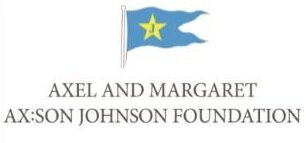This item originally appeared in Cyber Security Relations.
It is clear that cyber reserve forces (i.e. civilian groups) can make an important contribution to a nation's cyber security strategy. Given the current skills shortage in cyber security, those that possess the necessary skills tend to command high salaries that the government cannot afford. Yet a reserve force gives a government access to such skills in a cost-effective manner. In addition, it enables a flexible approach: the government can call upon additional support as and when it is required (typically in crisis situations when critical digital systems and national infrastructure are under attack).
It has previously been suggested that the UK should follow Estonia's lead in creating a comprehensive cyber reserve force. The UK could certainly do more; as discussed below, the current cyber reserve force is severely limited in its scope. However, whilst the Estonian cyber reserve may be to the envy of many developed states, it should be recognised that it cannot necessarily be duplicated elsewhere, given the importance of political and cultural factors.
The Joint Cyber Unit (JCU) makes up the British cyber reserve force, consisting of individuals leaving the military, current reservists and even those without prior military experience. Those within the military have acknowledged that the JCU needs to be predominately civilian - Major General Jonathan Shaw, head of Britain's Cyber Security Programme from 2011 to 2012 claimed that 'We need a cyber reserve and that should be largely civilian...Don't think camouflage, short-back-and-sides and weapons training. It's ponytails, earrings and thick spectacles - that's what we need.' However, the JCU is limited in scope for two reasons: First, there is predominantly a focus on technical requirements, as opposed to the broader skills required in cyber security (including legal, strategic, etc.). Second, the JCU only protects MoD assets, giving the unit a largely militaristic tone.
Major General Jonathan Shaw, an advocate for a stronger cyber reserve in the UK. Photo: The Telegraph
By contrast, the Estonian Defence League Cyber Unit (popularly known as the Cyber Defence League - CDL) is more encompassing. While also located within a military institution, the CDL has a broader outlook. The CDL contains a greater variety of specialists: lawyers, academics and risk management consultants all contribute in addition to computer scientists and cyber security specialists. The CDL's remit goes far beyond the protection of just military networks and includes critical national infrastructure more broadly. Indeed, CDL members were on standby during Estonia's 2011 election - with a significant number of Estonians voting online, an attack on the voting systems is an obvious target for potential aggressors. The CDL has also hosted tabletop simulation exercises for the Estonian Cabinet, ensuring preparedness for cyber crisis situations at even the highest levels of government.
Whilst the UK should certainly aspire to have a more comprehensive reserve force, duplicating the Estonian model will be difficult for a number of reasons.
First, as a small state, Estonia is inherently better able to recruit and mobilise a reserve force. Small states have historically adopted Total Defence models - with limited resources, the security of a state is the responsibility of every citizen - as opposed to just the military. Estonia's military reserve force outnumbers it full-time military 13,000 to 3,800. In addition, Estonia enforces compulsory military service for all healthy male citizens. Therefore the CDL is built upon a pre-existing culture of reserve forces and civilian involvement in security. In addition small states foster trust: with shorter communication links in an everybody-knows-everybody society, there is a greater chance CDL members will be known and trusted by the wider population when compared to the UK.
Second, there is a greater sense of patriotism in Estonia. CDL members volunteer and are only paid when formally called up. By contrast, JCU members in the UK are paid for training exercises they attend. Estonia is united by a common and imposing threat in its neighbour Russia; there is a sense of duty and the need to come together in order to defend against a significantly more powerful potential aggressor. Whereas there is an absence of such a clear threat in the British national psyche. The UK is arguably more worried about issues such as cybercrime, estimated to cost the UK £27 billion a year, that are outside the remit of a reserve force.
Third, cyber security is an issue higher up the political agenda in Estonia with greater buy-in from the government and citizens alike. With limited resources and budget constraints, Estonia has adopted technological solutions in order to overcome the legacy of the Soviet Union. This trend has continued today with Estonia one of the most connected states in the world: Estonians pay taxes and vote online, government ministers make decisions via e-Cabinet (video below) and concerned parents can access their children's exam results, class attendance and homework assignments via their smartphones. The role of technology in the in the development of Estonia, combined with current levels of digital dependency, mean that protecting digital systems is regarded as critically important.
The CDL demonstrates the increasing role civilian networks are playing in cyberspace. Compared to conventional security domains, the barriers to entry in the cyber domain are lower. Even those without sophisticated technical skills can still make a meaningful contribution - either in an offensive or defensive capacity. It is increasingly inappropriate to view the cyber domain through a militaristic lens: instead an appreciation of the non-traditional and non-state actors, empowered in the cyber domain, is required.
Yet although reserve forces can offer a number of advantages, the Estonian model cannot necessarily be duplicated in the UK. It shows that despite cyber attacks being largely technical in nature, the response required has significant political components and implications. Whilst states share many of the same challenges at a technical level, it is clear that there will be very different responses to the problem, given the importance of cultural and political variables in determining a state's strategy.





